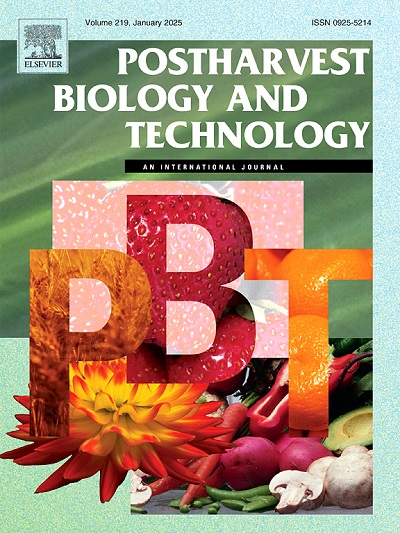不同温度下“徐香”猕猴桃贮藏期预测模型及程序的开发
IF 6.8
1区 农林科学
Q1 AGRONOMY
引用次数: 0
摘要
新鲜猕猴桃的易腐性和微生物污染降低了它的保质期,而且果皮厚、颜色深,消费者和商家很难从视觉上判断它的新鲜度,从而造成损失。相关的预测模型对于通过快速确定保质期来减少损失至关重要。通过模拟贮藏,对不同贮藏温度下猕猴桃的外观、生理生化特性和微生物种群进行了评价。结合动态方程和Arrhenius方程建立了基于变质质量的保质期预测模型,结合Gompertz模型和Belehradek方程建立了基于霉菌和酵母总变化的保质期预测模型。利用Python建立了两种模型的保质期预测程序,并对模型的准确性进行了验证和比较。结果表明,基于零级动力学模型的质量指标拟合效果较好。除减重外,货架期预测模型的平均相对误差均在10 %以下,其中基于L*的模型预测精度最高。基于霉菌和酵母总数的货架期预测模型的平均相对误差在25 %以内。本研究可为建立猕猴桃货架期预测模型,减少猕猴桃采后损失提供理论支持。本文章由计算机程序翻译,如有差异,请以英文原文为准。
Development of shelf-life prediction models and programs for 'Xuxiang' kiwifruit stored at different temperatures
The perishability and microbial contamination of fresh kiwifruit reduce its shelf-life, and the thick skin and deep color make it challenging for consumers and merchants to assess its freshness visually, resulting in losses. Relevant predictive models are crucial in minimizing losses by quickly determining the shelf-life. The appearance, physiological and biochemical properties, and microbial populations of kiwifruit stored under different temperatures were assessed through simulated storage. Shelf-life prediction models were developed based on deterioration quality using a combination of dynamic and Arrhenius equations, as well as total mold and yeast changes using a combination of the Gompertz model and Belehradek equation. Furthermore, a shelf-life prediction program was established for both types of models using Python, and the accuracy of the models was validated and compared. The results indicated that the quality index based on the zero-order kinetic model fits better. The average relative errors of the shelf-life prediction model were all below 10 % except for the weight loss, and the prediction accuracy of the model based on L* was the highest. The average relative error in the shelf-life prediction model based on total mold and yeast count was within 25 %. This study can provide theoretical support for developing shelf-life prediction models and reducing postharvest losses of kiwifruit.
求助全文
通过发布文献求助,成功后即可免费获取论文全文。
去求助
来源期刊

Postharvest Biology and Technology
农林科学-农艺学
CiteScore
12.00
自引率
11.40%
发文量
309
审稿时长
38 days
期刊介绍:
The journal is devoted exclusively to the publication of original papers, review articles and frontiers articles on biological and technological postharvest research. This includes the areas of postharvest storage, treatments and underpinning mechanisms, quality evaluation, packaging, handling and distribution of fresh horticultural crops including fruit, vegetables, flowers and nuts, but excluding grains, seeds and forages.
Papers reporting novel insights from fundamental and interdisciplinary research will be particularly encouraged. These disciplines include systems biology, bioinformatics, entomology, plant physiology, plant pathology, (bio)chemistry, engineering, modelling, and technologies for nondestructive testing.
Manuscripts on fresh food crops that will be further processed after postharvest storage, or on food processes beyond refrigeration, packaging and minimal processing will not be considered.
 求助内容:
求助内容: 应助结果提醒方式:
应助结果提醒方式:


